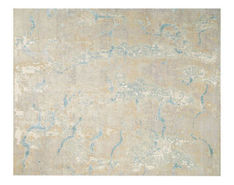Chair Christopher Guy 2014 60-0233-GG Creme
product code: 317059
Price level
Premium
Price depends on
configuration and the volume
of your order
configuration and the volume
of your order
Price
on request
on request
4
Sizes
74 cm
73 cm
175 cm
Product Specifications
| Materials | Wood |
|---|---|
| Shape | Rectangular |
| Upholstery | Fabric |
| Type of sitting | Soft |
| Adjustments | Without Adjustment |
| Avaliability of legs | Yes |
| Legs shape | Curved |
| Avaliability of back | Yes |
| Back shape | Straight |
| Back type | Soft, High Back |
| Dimension with package | 1.10 m3 |
matching this productClick to select a particular type of product
| Functional Purpose | Multipurpose |
|---|
Product colour
Gray
brown
Style
Art Deco / Art Nouveau
Art Deco is a relatively young style that emerged at the beginning of the 20th century. It owes its existence to France and the French, and it used to represent the combination of modern and neoclassical styles in architecture, fashion and art. Then, in the 1970s, the term "Art Deco" was extended to also mean a style of interior design. This style's characteristic feature is the seemingly impossible fusion of classical straight lines and strict forms with the asymmetry of luxury and splendour. Art Deco interior design implies an abundance of expensive, exotic materials, plenty of curved lines, mythical paintings and tapestries of dragons and peacocks. Art Deco is considered to be the most original style of interior design, it leans toward ostentatious luxury and splendour and absolutely does not tolerate asceticism or minimalism. When decorating in this style, designers often use inclusive fountains, podiums, forged lattice, exotic fans, marble decorations and stained glass. Art Deco furniture also has to be unique in appearance and very rich - created using light wood, genuine leather, chromium-plating.
Oriental / Japanese / Chinese
Oriental styles are very quaint. Like every ethnic trend, they are tightly bound to national tradition. The Oriental styles' main attributes are simple lines and definite forms, though less ascetical than in minimalism. Both furniture and decor use only natural materials. The furniture itself is low and squat: instead of a bed we would often encounter a podium or a futon, instead of a wardrobe - a chest and caskets. Wide door frames, contrasting colours, screens, mats,curtains made of bamboo, jute, sisal. Dimmed, opaque lighting is usually provided by low hanging lamps and squat floor lamps. The Chinese style has more decor: various figurines, lamps, calligraphy and patterns.
Other chairs






































